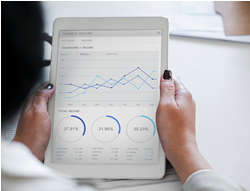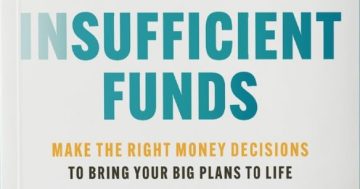Kylie Purcell* says picking a superannuation provider is only half the battle, because the wrong investment can cost you hundreds of thousands of dollars by the time you retire.
 If there’s one lesson that we can take from the Financial Services Royal Commission, it’s that we can’t always rely on our financial institutions to make the right decisions.
If there’s one lesson that we can take from the Financial Services Royal Commission, it’s that we can’t always rely on our financial institutions to make the right decisions.
And when it comes to superannuation, the wrong investment can cost you hundreds of thousands of dollars by the time you retire.
Choosing the right low-cost provider is one part of it, but it’s only half the battle.
While it’s important to avoid high fees, getting your investment mix right and managing risk is the real key to maximising net returns, according to financial adviser Dominic Alafaci of Collins House.
So, what are your choices?
Super providers generally offer a number of fund options.
At a basic level, these are: cash, conservative, balanced and growth (although different funds will have their own definitions of these).
These options have a mix of investments including cash, property, local shares, global shares and bonds.
To risk or not to risk
Providers will say that each mix comes with a different risk level — with cash or conservative being the “lowest risk” and “growth” the highest.
But that explanation can be misleading.
Some customers of AMP found this out the hard way out when they lost everything in their “low-risk” cash-only super funds.
The “low-risk” conservative options deliver a lower interest return and comprise mostly cash and bonds, with a lower proportion in shares and property.
Growth funds are the opposite, with more of your super deposited in the higher interest shares and property component, and less in cash or bonds.
But high risk doesn’t mean you’re at risk of it all disappearing.
Property and shares fluctuate with the market.
In the short term, that means your super balance could drop for a few years, but will climb higher over decades.
Conservative accounts fluctuate less, but will also end up delivering much lower returns over a long-time period.
Here’s what you need to consider:
Growth
Growth or high-growth funds are likely to be your best choice, unless you’re nearing retirement, according to Alafaci.
These funds tend to have a mix of Australian shares, international shares and property.
So, they move up and down as these markets do.
“The returns are likely to outperform the less aggressive portfolios over 10-year cycles,” says Alafaci.
“However, if your time horizon [until retirement] is under 10 years … tread carefully, as the volatility associated with shares and property may work against you.”
Balanced
Since most super providers automatically put you into a “balanced” fund, it’s no surprise that this is the mix most Australians are currently invested in.
This is neither high nor low growth.
As you’ll normally want to choose a “growth” option if you’ve got more than a decade left, there’s little reason for most people to stay for long in a “balanced” account, according to Alafaci.
He says the balanced option is good for young people that are particularly “risk adverse”, or suffer strong negative emotions relating to short-term loss (known as myopic loss aversion).
“I have found it’s best to let them start off in a lower risk ‘mix’ and gradually increase their exposure to growth assets over time, as there is no point stressing them out unnecessarily,” he says.
Conservative
This is your “low-risk”, low-growth option, and usually not for anyone with more than a decade left before retirement.
“The ‘conservative’ option should be used by older members for funds that you’re pretty sure you do not need to access for at least 24 to 36 months,” says Alafaci.
If you’re likely to need access to the funds within three years, you might consider a “cash option” to avoid any market falls.
This is rarely recommended for younger members.
Cash
The cash option got a bad rap during the Royal Commission when customers found their low-interest high-fee accounts wiped out their life savings.
But not all cash accounts are bad, according to Alafaci.
He says “real cash funds” see a low but decent rate of return.
That said, the cash component should only be used in funds where you know you’ll need to withdraw it in 24 to 36 months.
DIY mix
Some super providers allow members to choose their own investment mix.
For example, this can allow members to choose higher growth investments than the fund’s pre-mixed funds.
But this can come with risks, including higher fees and poor returns, according to Alafaci.
“If you have never owned anything other than a bank account and a credit card linked to PayPal … then perhaps you should engage a professional to assist you,” he says.
The important stuff
At the end of the day, it comes down to understanding three key things about your fund: interest, fees and retirement date.
In other words, how much interest the fund will earn for you by the time you retire, and how much the fund will take out again in fees.
Then, how much “risk” you’ll want to take on will mostly depend on how many years you have before you retire.
If you’ve got more than 10 years of work ahead of you, your best bet is a growth fund.
Otherwise, stick to something more conservative.
Get those things right, and you can relax for a little while on the road to retirement.
* Kylie Purcell is a senior digital journalist with Your Money.
This article first appeared at www.yourmoney.com.au.











